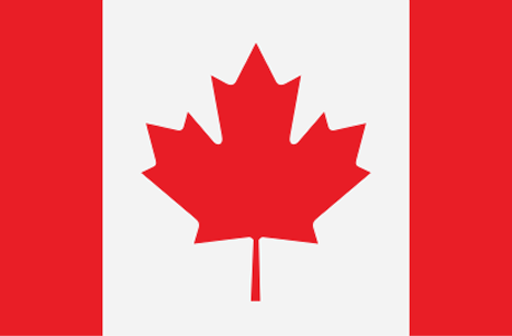When and How To Use Masks In Public
When and How To Use Masks In Public
Protecting yourself and others around you has become pertinent at this challenging time of the Coronavirus pandemic. There are health statutory guidelines that you should adhere to to protect yourself and other individuals around you. It is expected that if you adhere to these health regulations, you will reduce the risk of transmission both ways to the barest minimum. The aged and individuals who have acute underlying medical conditions like diabetes, heart, or lung disease are at a higher risk of getting chronic complications the Coronavirus ailment. The reason anyone cannot afford to be careless at this time; a little carelessness translates into a huge health catastrophe.
Transmission of the Coronavirus
There is presently no inoculation to avert the coronavirus disease. The best way to avert the ailment is to keep away from being exposed to the virus. The virus is believed to transmit chiefly from individual to individual. Especially, amongst individuals that are in close contact with one another; through droplets released when an infected person coughs, sneezes or talks. These droplets can get in the mouths or noses of individuals close by or could be breathed into the lungs. Current research has reported the possibility of the Coronavirus being transmitted by individuals not showing symptoms- asymptomatic.

Source: Pexels.com
Steer clear of close contact
In your home, avoid close contact with sick individuals. If possible, ensure to maintain 6 feet between you and the sick person and other family members too should do the same. Outdoors let there be a 6 feet distance between you and individuals around you that are not family members. Do not forget that some asymptomatic individuals; without symptoms are transmitting the virus ignorantly. Keeping distance from others is principally crucial for individuals who have underlying ailments.
Compulsory use of a facemask
You can transmit the Coronavirus to others even when you do not feel sick. The use of cloth facemask is intended to safeguard other individuals just in case you are infected. Every individual should put a cloth face mask outdoors and when around individuals who are not in your family circle, principally when social distancing is challenging to maintain. Cloth face masks should not be placed on infants below 2 years; any individual that has breathing complications, or immobilized, unconscious, or unable to remove the mask without help. Keep about 6 feet between yourself and others constantly. The cloth face mask is not a replacement for social distancing.

Source: Pexels.com
Routine Handwashing
Constantly and exhaustively wash your hand with soap and water or clean your hands with an alcohol-based hand sanitizer. Washing your hands with soap and water or making use of alcohol-based hand sanitizer kills the microbes that may be on your hands. Wash your hands regularly with soap and water for 20 seconds in the least particularly, after you have been outdoors; after blowing your nose, sneezing, or coughing. It is equally as important to wash your hands before food preparation or eating; also wash your hands after using the restroom; and before touching your face; wash your hands after coming in from outdoors; also after handling your face mask; after diaper change; after touching pets or animals; and finally, after caring for an unwell individual… The list is inexhaustible. Remember, just in case, soap and water are not within reach, make use of a hand sanitizer that has at least 60% alcohol. Spray or spread over the surface of your hands and rub together until it evaporates. Avert from touching your mouth, eyes, and nose with unclean hands.
Cover your sneeze and cough
Constantly cover your nose and mouth with a tissue when you sneeze or cough; or cough or sneeze into your elbow but do not drizzle. Throw used tissue in a covered bin and wash your hands immediately with soap and water for at least 20 seconds. If soap and water are not within reach, make use of a hand sanitizer that contains at least 60% alcohol.
Decontaminate surfaces
Decontaminate high-traffic areas and surfaces often; this comprises of phones, desks, tables, door handles, keyboards, light switches, countertops, sinks, toilets, and taps. Clean dirty surfaces with detergent or soap and water before decontaminating. Keep alcohol-based hand sanitizers out of the reach of children so they do not ingest it; it can be toxic. You must teach them how to make use of the sanitizer and keep an eye on its use. Apply a minute amount on your hands. It is unnecessary to use a large amount of sanitizer. Avert from touching your mouth, eyes, and nose soon after using an alcohol-based hand sanitizer; it can irritate. Hand sanitizers endorsed to safeguard you against the Coronavirus are alcohol-based and thereby flammable; ensure not to use before cooking.
Observe your health status
Be self-aware for symptoms; look out for shortness of breath, cough, fever, and other symptoms of the Coronavirus. This chiefly important if you move around a lot, on very important errands and when in places where physical distancing is challenging. Ensure you check your temperature if feel traces of the symptoms developing. Also, ensure not to check your temperature thirty minutes after an exercise or after ingesting medications. Safeguard yourself and others from the continuous spread of the Coronavirus.
You can limit the probability of your getting infected or transmitting the Coronavirus by taking these steps:
Stay at home and isolate when you observe you have minor symptoms such as mild fever, cough, headache, till you feel better. Take deliveries but if it is necessary for you to leave your house, put on a mask to avoid infecting others. Avoid making close contact with others as this will safeguard them from possible Coronavirus and other viruses.
However, if you have breathing challenges, feverish feelings and cough, seek immediate medical attention; put a call through via telephone ahead and adhere to the instructions of your local health agency. Calling in early will assist your health care provider to decide on the next step to take in directing you to the correct health institution.









Leave a comment